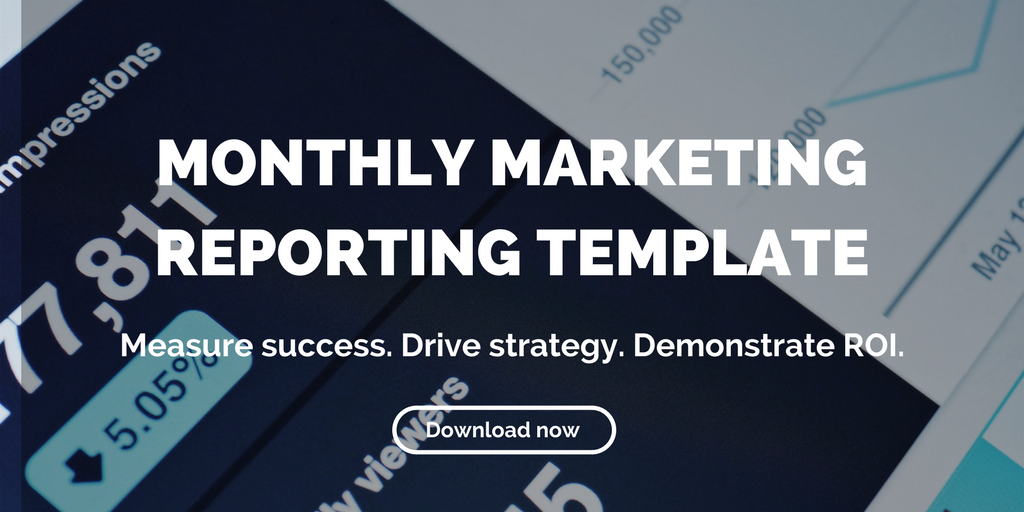Your search results for "Instagram"

Paid Digital Advertising: A Beginner’s Guide for Real Estate Marketers
Paid digital advertising can help accelerate your content marketing efforts so that your content gets in front of prospective buyers and renters faster than would happen organically.
We are strong believers in content marketing. Build it, and they will come — or, in content-marketing speak, publish quality content, and buyers will come to you. But, content marketing takes time to bear fruit. There’s not much you can do about that.
Except paid digital advertising.
By investing in paid digital advertising, you can boost the reach of your posts, display ads, and videos. Pair quality content with a comprehensive digital advertising strategy, and you will be in a position to drive more traffic, create more brand visibility, and sell or lease more properties.
Your peers understand this. Within the first quarter of 2017, Facebook, Instagram, Twitter, LinkedIn, Snapchat, and Pinterest saw a 61.5% increase in paid media spend. And that’s only going to increase through 2018.
So where do you start? Here are three places to get started in using paid digital advertising to help market your property.
3 paid digital advertising platforms
1) Display ads
Display ads are the paid advertisements that appear in front of users on website pages in the form of graphics. Unlike text-based ads, display advertising relies on elements such as images, audio, and video to communicate an advertising message. Display ads are commonly referred to as banner ads, but they don’t always take banner form. They can come in all shapes and sizes, and can appear anywhere on a webpage.
Benefits: Because digital ads are visual, they can be customized with your logo, message, images of properties, or an offer to help increase brand awareness. You have the ability to use graphics, video, and audio to really stand out and highlight your properties. Display ads also allow users the ability to target a specific audience. You control which sites they appear on, which geographic area they appear in, and which demographic or niche market they appear to — all valuable tools for the real estate marketer.
2) Sponsored social media posts
There are sponsored posts plus other ad opportunities like Facebook like campaigns, website click ads, and lead ads.
Social media is a natural place to begin if you’re looking to get into paid digital advertising, particularly for the real estate industry. A good starting point is Facebook. The social media giant’s social ad revenue was more than $9.16 billion in Q2 2017 alone. And it doesn’t stop there. Twitter brought in $548 million in social media advertising revenue in the same period, and Snapchat is expected to reach over $895.5 million in ad revenue in 2017.
More specifically, three of the most useful types of sponsored social media posts for real estate marketing are:
- Facebook Like Campaigns: These campaigns are aimed directly at increasing the number of likes for a Facebook page, targeting people who might be interested in your brand and the posts you share on Facebook.
- Facebook Website Click Ads: These are ads that point people on Facebook to your website, or even the listings for specific properties.
- Facebook Lead Ads: These ads allow users to request information, estimates, or newsletters without leaving Facebook. Requiring fewer steps of prospective leads increases conversion rates.
Benefits: Running paid social ads allows you to reach a large audience at a low cost. You pay based on the type of ad you’re running. For example, if you’re looking to drive brand awareness, you’ll incur a CPM (Cost Per 1,000 Impressions). And not only are the ads relatively inexpensive to run, they’re not expensive to create. You get all of this plus the ability to target your specific audience, reaching people that are interested in learning about the properties you have to offer.
3) Google AdWords
Google AdWords places your website as one of the top results on a search engine results page (SERP) when a user searches for certain keywords of your choice. When a user clicks the AdWords link or calls your business using that link, you incur a charge (pay-per-click). Otherwise, impressions are free.
Google’s most recent update involves changes to the so-called “3-pack,” or the listing of three related local businesses on a search results page. Many users rely on the 3-pack to discover businesses in their area that offer the products and services they are seeking. This is particularly helpful for users searching for local real estate. And real estate copanies get the benefit of many additional leads and investors when they appear in the 3-pack.
Benefits: The biggest benefit of Google AdWords is its speed. You appear in a top spot in a user’s search results, meaning you are one of the first things a user sees when searching for a specific location or property keyword. That’s another good point: Google AdWords allows you to focus on people who are searching for what you have to offer, so you don’t pay for a bunch of wasted impressions — particularly valuable in real estate marketing, where geography is key. AdWords also gives you real-time reports to track your ad’s success. A dashboard shows information related to each campaign, such as the ads clicked, keywords entered by website visitors, cost of clicks and much more.
Related posts:
- How Pay-Per-Click Helped This Property Get 54 Leads
-
Learn How Content Marketing Increased Real Estate Sales by 37% in 90 Days
-
Using Content Marketing to Market and Sell Luxury Real Estate
Your search results for "Instagram"

Top 5 Real Estate Blog Posts of 2019 … So Far
Here are our most-viewed real estate blog posts from this year, covering topics from social media to the latest trends in digital marketing.
Throughout the year, we regularly write blog posts to help our readers stay on top of the latest news and happenings in the real estate industry, particularly in regard to digital marketing. We hope these posts provide insight, tips, and insider information on how the consistent publication of quality content can help you edge ahead of the competition.
We’ve covered some great stuff this year, from new trends (like automation) to questions that clients ask year after year (like how real estate brands use social media). Here’s a look at our most popular posts so far this year.
Top real estate blog posts from 2018 (so far)
1. 5 Tips to Step Up Your Real Estate Social Media Marketing
Increasingly, traditional marketing tactics are giving way to newer methods, and inbound marketing is taking the place of outbound. We’ve said it before, and we’ll say it again: real estate and social media are a match made in heaven. Here are five tips to boost your real estate social media marketing efforts. Read more
2. Google Analytics for Real Estate Marketers – 4 Steps to Get Started
When it comes to gaining insights into real estate leads, Google Analytics is one of the most powerful tools out there right now. The data that Google Analytics for real estate provides gives you invaluable insights into how your audience is interacting with your content, as well as how your content is performing over time. Read more
3. 6 Simple Tools for Creating Animated Real Estate Marketing Videos
Savvy real estate marketers are jumping on the video bandwagon, but the process can still be intimidating. Creating an animated image, GIF, or video can sound impossibly difficult — particularly if you’re over the age of 15! But in reality, there are plenty of tools that make creating these items not only simple but cost–effective as well. Read more
4. The Role of Social Media in Luxury Real Estate Marketing
In the ultra-competitive field of luxury real estate marketing, social media can be your secret weapon. Real estate is inherently personal, even at the corporate and luxury levels, and marketers can effectively use social media to cultivate productive relationships with leads. Here are four ways social media can boost your luxury real estate marketing efforts. Read more
5. Top Real Estate Marketing Trends 2019
Real estate is a competitive and ever-changing industry. Just when your business settles into a successful routine, new marketing tactics and trends can throw you a curve ball. But being aware of the forces shaping the industry is the best way to hit your marketing efforts out of the park this new year. Here are the four top real estate marketing trends that we see coming in 2019. Read more
For more useful tips, return to this space. We post twice a week, every week of the year.
Related posts:
- Using Content Marketing to Market and Sell Luxury Real Estate
- 10 Quick Ways to Grow Brand Awareness
- 5 Real Estate Instagram Accounts You Should be Following
Your search results for "Instagram"

3 Tips for Marketing to Millennial Real Estate Buyers
Home buyers are getting younger. Is your marketing strategy ready to meet the needs of millennial real estate buyers?
Consider this: more than a third of all home buyers came of age in the digital age. That’s right—millennials, those aged 36 and younger, now make up 34% of home buyers, which is the largest chunk of any generation buying homes right now.
These digital natives have a buying process that’s completely foreign to older generations, which means “traditional” marketing tactics won’t cut it when it comes to appealing to this demographic. Adjusting your strategy to resonate with millennials makes sense not just because it helps you reach this segment of the market, but also because it keeps you better positioned for the future of real estate marketing.
These three tips will help you adjust your strategy to market to millennial real estate buyers.
1) Be ready to guide them through the process
Millennials get a lot of bad press, as a generation that requires constant coddling and hand-holding. But to be fair, these young home-buyers are new to purchasing real estate—the vast majority (66%) of buyers ages 36 and under are first time home-buyers.
Buying a home is a complicated process, and millennials are looking for agents who will take the time to help guide them through the process. What does this mean for your marketing strategy? Placester’s Carolyn Berk suggests that “because guidance is so important to millennials, your marketing should emphasize your dedication to assisting customers every step of the way.”
This means offering resources and strategies rather than simply promoting available properties. For example, an eBook that guides first-time home buyers through the process is a great way to demonstrate your knowledge and commitment to supporting your clients through the buyer’s journey.
2) Help millennial real estate buyers save money
More than previous generations, millennials are saddled with student loan debt and often rely on sources other than just savings to finance their down payments. Simply put, they are looking to save at every opportunity.
Once again, content is your best bet for demonstrating to millennial real estate buyers that you are there to help them save money. Blog posts, testimonials, and case studies should detail your expertise in getting your clients the best possible deal. “Small things, like helping with contract negotiations or mortgage lender references, can go a long way with millennial buyers,” says Berk.
3) Go digital
This one probably seems obvious, but you’d be surprised at how many real estate professionals neglect their digital marketing presence. From social media to your website, marketing online is no longer optional, it’s expected. Millennial real estate buyers are heavily using the internet during their search and buying process, and your marketing strategy needs to be ready to meet them online.
First off, your SEO (search engine optimization) is key—your content needs to be readily available to potential buyers entering relevant search queries. “Aligning the content in your website to keywords that millennials use to search for homes in your region will help you pop up in search listings,” suggests Berk.
Your social media presence is also important. Millennials are checking Facebook, Twitter, Instagram, and Snapchat frequently throughout the day, and they should be finding your content. Take advantage of these visual media to promote your properties with photo and video content.
Marketing to millennial real estate buyers makes sense for your overall marketing strategy and helps keep your brand relevant and ready to adapt to the future.
Related posts:
- 5 Tips for Building a Successful Real Estate Social Media Marketing Program
- Real Estate Firm Grows Sales by 300% through Content Marketing
- Must-Know Social Media Strategies for Real Estate
Your search results for "Instagram"

Social Media Trends for 2018 Real Estate Marketers Need to Know
Augmented reality, streaming video, and local experiences are 3 social media trends to try in 2018.
If there’s one thing real estate marketers can be sure of in the coming year, it’s that social media will continue to dominate the marketing landscape. Social media presents tremendous opportunity, particularly if you’re aware of upcoming trends.
“While the job of marketing and selling a house once required a lot of legwork on behalf of the agent or seller, many of the tasks associated with listing and promoting are much easier thanks to social media,” says Realty Times blogger Megan Wild.
Here are 3 social media trends for 2018 that you need to know about.
3 social media trends for 2018
1) Augmented reality
Just a few years ago, this seemed like purely Sci-Fi territory. But what was once wild fantasy is quickly making its way into real life.
Last year, for example, Apple announced that the iPhone 8 and iPhone X would incorporate a new chip that enables users them to provide users with augmented reality experiences. Google Glass may have been a flop, but now Facebook, Google, and Snap are all also throwing their hats into the augmented reality ring.
So what does this mean for real estate marketing? This technology is still in its early stages, and the possibilities will continue to develop as capabilities grow. But already sellers are using augmented reality and virtual reality to display potential color themes, floor plans, and possible renovations.
2) Streaming video
As video capabilities on smartphones and other devices continue to skyrocket, services like Instagram Stories, Facebook Live, and Snapchat are changing the way people interact with the world. According to Livestream.com, “about 80% of consumers would rather watch a live video from a brand than read a blog, and 82% would prefer live video to written social media updates.”
If you haven’t already started to make use of these platforms, it’s time to jump on the bandwagon. What was once a cool idea for reaching your audience is now the expectation for brands.
You can optimize your videos in all kinds of ways, like location tags, titles, and targeted descriptions. “Buyers no longer have to spend their days traveling and visiting different open houses,” says Wild. And “instead of spending their time preparing hosting open houses to advertise their new properties, agents can use high-definition video to provide a detailed tour.”
3) Local and personal experiences
Every new technological boom comes with a price. Social media marketing is incredibly popular for a reason, but increased volume means an increased presence of brand-written content, which in turn leads to brand fatigue among buyers. As a result, local and personal experiences are moving into the forefront. Online consumers want local, interpersonal interactions.
While it may seem like more work, this is great news and presents a lot of opportunities for real estate marketers. Real estate is local by its very nature. The more content you share on social media that focuses on place (e.g. local restaurants, entertainment, community events), the more of a personal connection you forge with your audience. Ultimately, that connection is what social media is all about.
What social media trends are you trying in 2018?
Related posts:
- 4 Steps to Building a Successful DIY Content Marketing Strategy for Real Estate
-
How Will Facebook Marketplace Housing Affect Real Estate Marketers?
- 6 Social Media Don’ts for Property Management Companies
Your search results for "Instagram"

Marketing Real Estate on Social Media: 8 Best Ways to Get More Leads
How do you gain maximum exposure for your luxury brand? Here are 8 tips to boost your real estate social media strategy.
Did you know that 91% of marketers are looking for the best ways to engage their audience on social media? Real estate is a very competitive yet lucrative field, a fact that demands a real estate social media strategy. But only those who know how to utilize the best tools and strategies get results.
When it comes to shifting properties, the game is on another level. Local developers are moving towards visually appealing homes complete with a wide range of wellness amenities — and they let it all shine as part of their real estate social media strategy.
To move towards a positive step in luxury development, successful real estate marketers are using social media as the go-to strategy to get high quality leads. Want to know how to boost your real estate marketing game using social media?
Here are our top tips on how you can make your real estate social media strategy a success.
1. Have a unique social media profile
Do you think it is enough to open a social media account for your real estate company and fill the profile details in a hurry? Of course not. You need to optimize your profile and ensure it stands outs from the rest. You’d be surprised to find out that 79% of the people in the United States have a social media profile. So, while you will need to add relevant information related to your business, such as contact details and address, fill out the story section to make it clear which services you are offering.
2. Share luxury development content for local people
A vast number of people who will view your properties will most likely come from the same area where your real estate company is located. Therefore, it makes sense to focus on posting local content that will drive the locals to your social media platforms. Apart from posting content, you can also target local people by sharing local news, information related to the prices of local properties, and local events your company will be sponsoring. Make sure to share photos that are geotagged.
3. Add videos on your social media pages
YouTube is one of the top search engines for videos. In fact, 86% of home shoppers prefer to use video to get more information about properties. Besides, 52% of marketing professionals agree that video content tends to have the best return on investment (ROI). Uploading a video on social media could be the difference between a home buyer choosing your company or that of your competitor.
4. Use reviews to promote faster sales
Social media provides a platform for consumers to tell their truth about a specific service or products which then motivates other potential customers to take decisive action. Also, 62% of potential home buyers would go for a real estate company that was found online and had excellent reviews. To connect with your customers, share their success story, testimonials, or review on social media. You can even go further and offer an incentive to motivate people to leave a review.
5. Add hashtags to your content
Users on social media are looking to make a personal connection with the people behind the real estate marketing and not automated machines. Create social media content in advance to avoid last-minute rush and add hashtags that clearly shows how your luxury development is unique.
6. Engage with your followers to increase brand awareness
One of the best ways to attract internet users to your real estate company is to educate them and offer free advice. Posting information related to property listing at all times will make you look promotional. You can quickly build your brand and connect with people by giving them beneficial advice, such as the latest real estate marketing trends 2019. That way, people will view you as an expert in the industry and contact you for any inquiries.
7. Find local online communities
While Facebook is a great platform for finding and connecting with local communities, Instagram is one the fastest growing social media platforms with over 1 billion active users. You can use both platforms to build a community and start creating content for them.
8. Make use of Pinterest
People are likely to be more attracted to property listings with high-quality images. In fact, 87% of home buyers find photos of properties very useful in making an informed decision. Apart from social media, you can use Pinterest to pin visually appealing images to popular boards related to real estate.
What do you think will be the most important part of your real estate social media strategy?
Would you like someone else to do the job? We are here to help.
Related posts:



